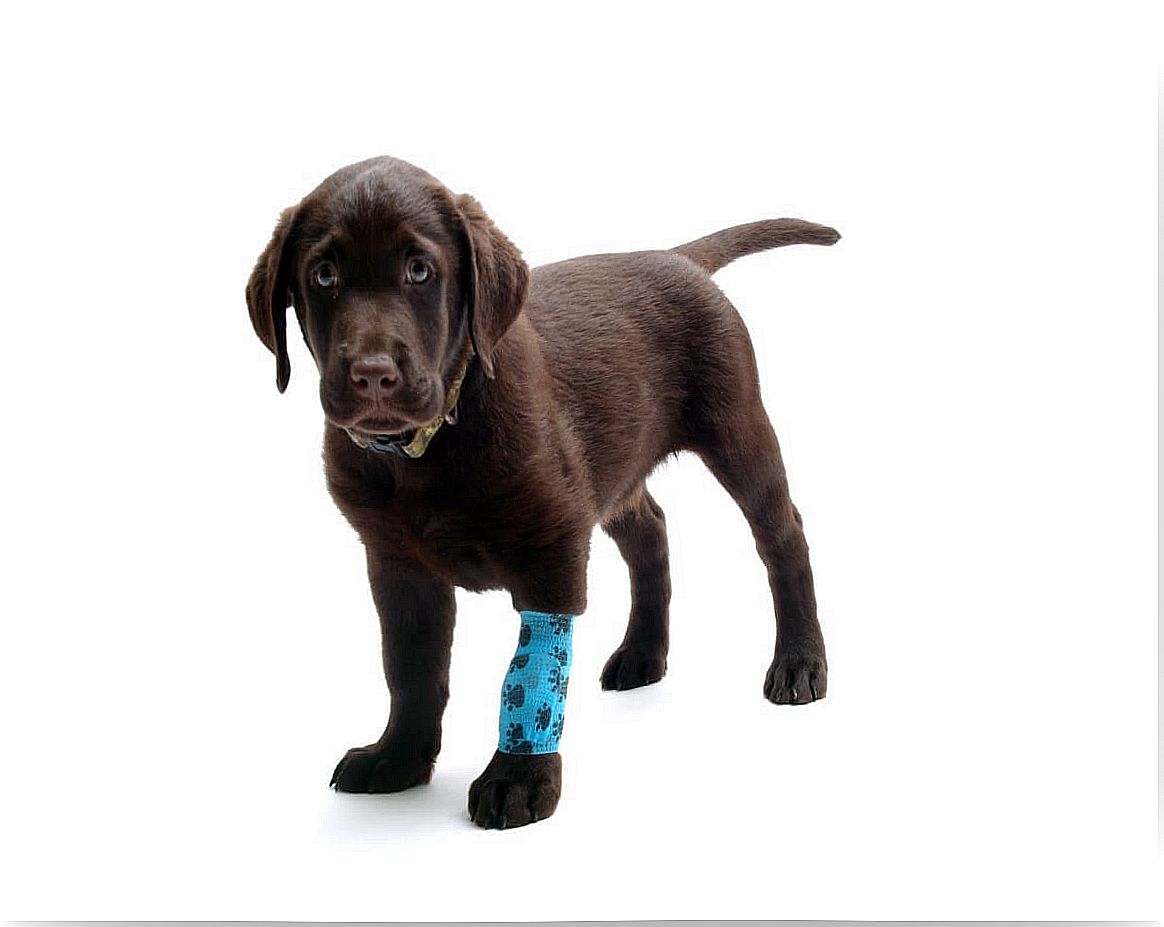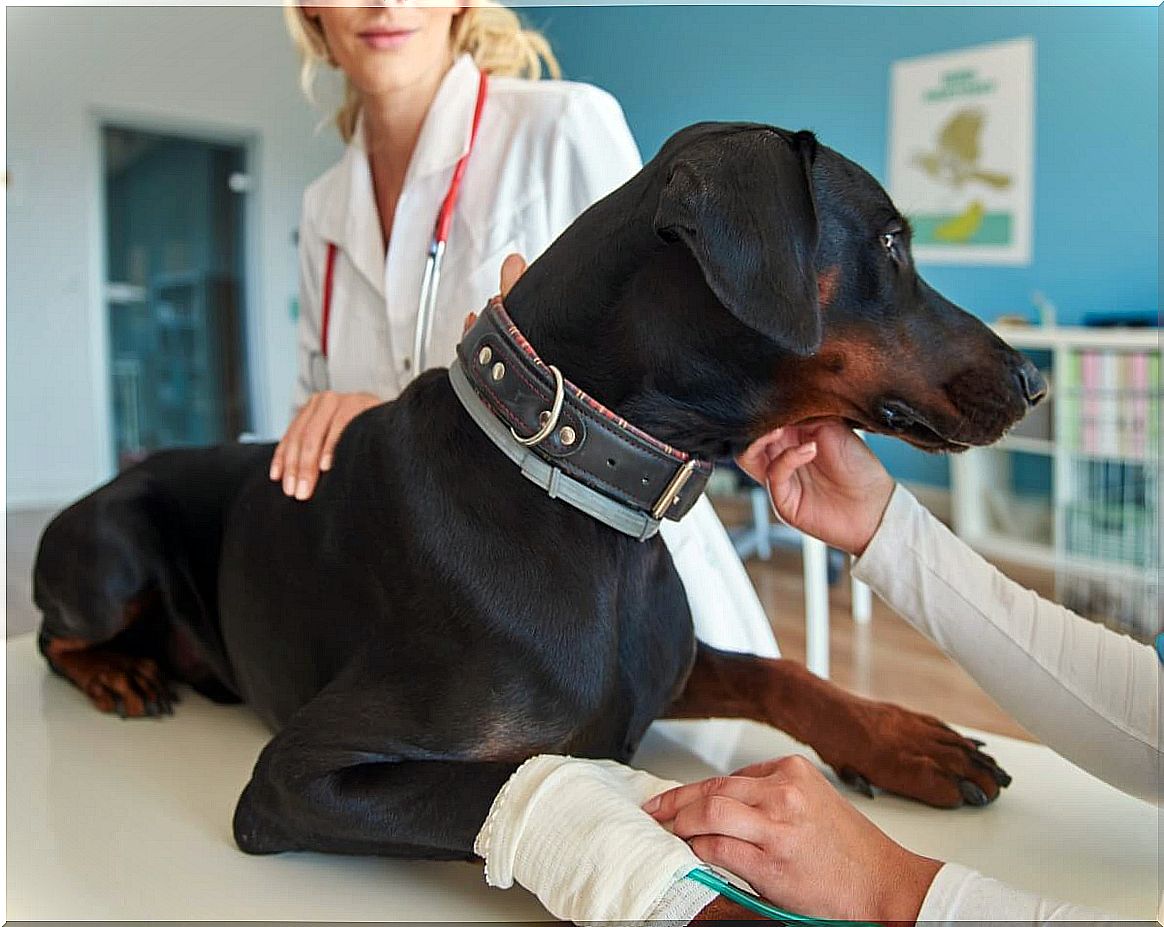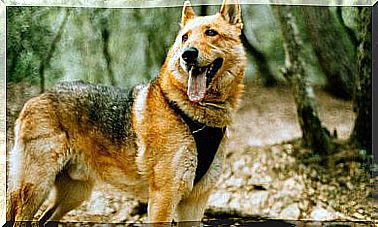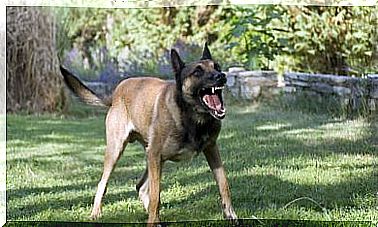Sprain In Dogs: Causes, Symptoms And Treatment

Most dogs are characterized by being energetic animals, who love to play with people and other animals. Some are so lively that they can have an accident and be injured. For this reason, sprain in dogs is considered one of the main reasons for going to a veterinary clinic or hospital.
In this article we will talk about everything you need to know about sprains in dogs, how to identify them in time and how to treat them to avoid complications.
What is a distortion?
Surely you have heard of ligaments and joints, because it is in them that sprains occur. In both humans and dogs, a sprain is a condition caused by the strain, tear, or rupture of a ligament.
The main function of the ligaments is to hold the bones together in the joint. Depending on the strength of the traction, or the rupture of the ligaments involved, the severity of the sprain will be greater or lesser and, consequently, the recovery time will also vary.
Causes of sprain in dogs
There are numerous reasons why your dog can get injured and have a sprain. However, most of them are considered to be of traumatic origin. Accidents can occur at any time and in any dog, however the most exposed are those that are hunting, sporting or not supervised while walking.
The main causes of sprain in dogs are as follows:
- Fighting or violent games with other dogs.
- Accidents.
- Strong impacts after jumps.
- Overweight.
- Of degenerative origin, especially in geriatric patients.

Sprain Symptoms in Dogs
As with any situation or disease your dog experiences, observation will always be a very important factor. From the first moment you notice odd behavior in the pet dog, don’t let it go unnoticed and notify your veterinarian. Pay attention, as below we list the main symptoms of a sprain in dogs:
- Joint swelling – may be hot and red.
- Lameness – in case of affected limbs.
- Decay.
- Excessive licking of the injured region.
- Loss of appetite.
- Pain and whimpering.
Types of sprains in dogs
A sprain can occur anywhere on your pet’s body, in the areas where the ligaments are located. The main regions that are often injured are the legs, knees, hips, cervical and neck.
Additionally, sprains in dogs can be classified according to their intensity. As the level increases, the greater the severity:
- Level 1 sprain : This is a minor injury in which the ligaments were only minimally torn. In this case, you can observe your dog with a slight discomfort in walking.
- Level 2 sprain : Within the affected joint, ligaments and muscle fibers are torn. Symptoms your pet may exhibit will be pain, significant inflammation, and increased discomfort.
- Level 3 sprain: This is considered the most severe sprain, usually caused by very intense trauma. The ligaments and some bones are completely broken, affecting the entire joint.
How the diagnosis is made
When it comes to muscle, bone and joint injuries, a professional medical evaluation is imperative. As a first step, your vet will perform a general physical exam along with an orthopedic exam on your pet. Sometimes, the use of imaging methods is also necessary to ensure the final diagnosis.
Since these are painful injuries, the patient is likely to be given a tranquilizer to facilitate management. X-rays will be one of the main support tools to obtain clearer images of the lesion.
Due to a sprain in dogs, the tissues are damaged. Therefore, in some cases a physical examination is not sufficient to verify the extent of the injury. The vet may therefore suggest the use of more specialized diagnostic methods such as an ultrasound or MRI.
Duration and treatment
How long it takes your pet to fully recover after a sprain will depend on the level of the injury. We recommend that you follow the instructions and advice given to you to the letter, so as not to prolong the discomfort in your dog.
The indicated treatment for a sprain in dogs is mainly based on the following points:
- Use of medications : The administration of analgesics and anti-inflammatories will be essential to reduce the discomfort of your pet. Both the route of administration and the dose will be indicated by the veterinarian.
- Immobilization : It is difficult to get the dog to completely obey your instructions. Therefore, the use of splints and bandages can help immobilize the joint. Make sure you keep your puppy clean and dry. If necessary, periodically change very carefully the bandage and the material used.
- Absolute rest : reducing the movements in their entirety will favor the recovery of the ligaments and the joint in general. Therefore, provide a comfortable resting space for your canid. If he lives with other dogs, keep them under control, to prevent them from hurting the patient during play.
- Surgery : In very severe cases of sprain in dogs, surgery may be required to reconstruct the joint.
- Rehabilitation : Regardless of the level of sprain your pet has suffered, your vet can recommend techniques such as hydrotherapy, massage, laser, and electricity. The goal will be to reduce the likelihood of sequelae and improve the patient’s quality of life.

Using dietary supplements that promote good body condition and weight control will be effective in preventing sprains from occurring in dogs. As mentioned earlier, an accident can happen at any time, so if you suspect an injury, consult your vet.









